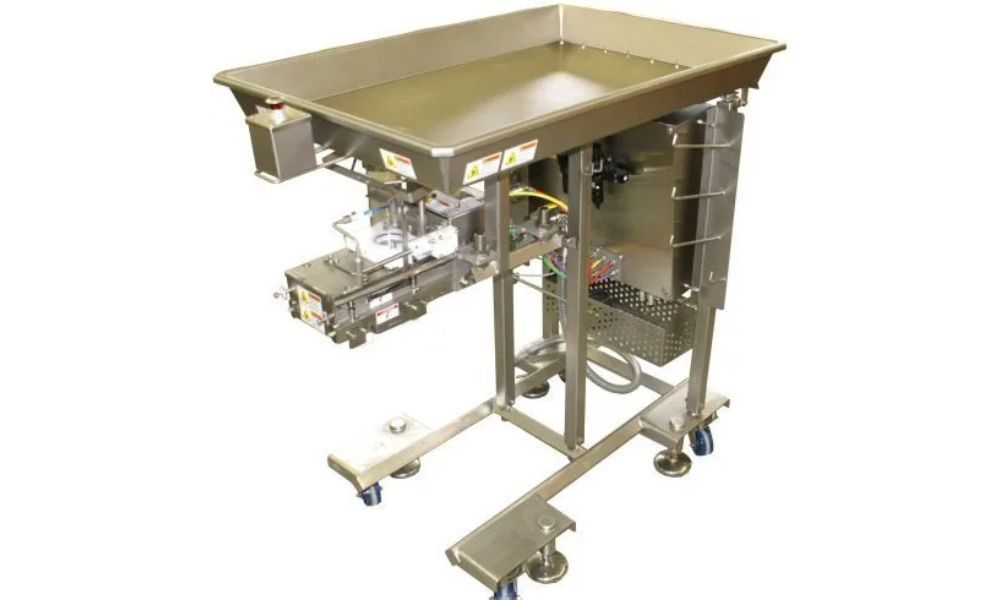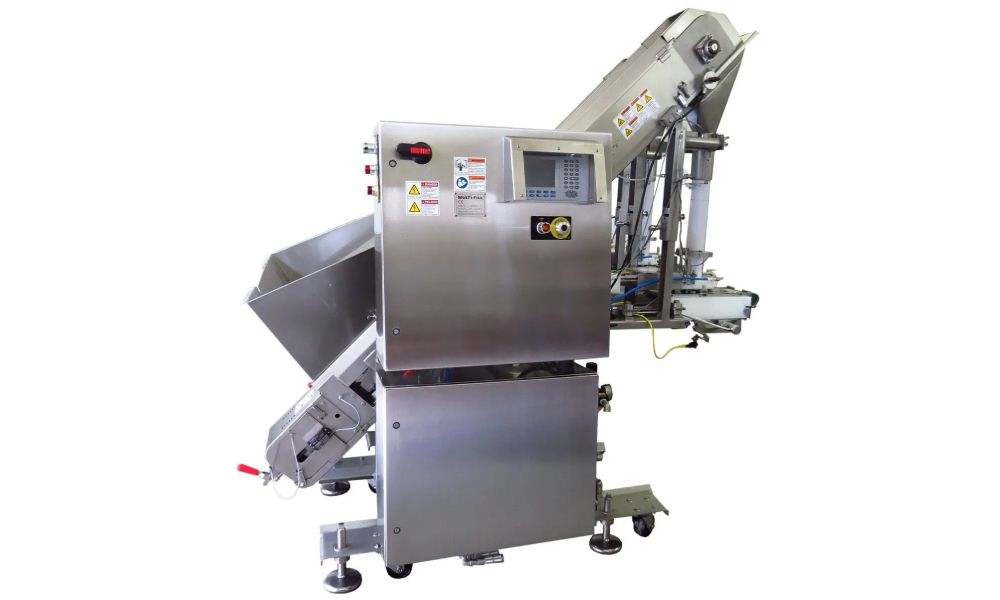Centrifugal Machine Vs Cellular Tray Machine
A centrifugal counting machine is designed for quick and efficient bulk food counting. The machine works with a high-speed, continuous ordered workflow. The machine is also simple to operate, reduces waste, and ensures accurate packaging. The cellular tray machine designed for distribution and bulk product counting. The machine is suitable for single dropped products and batch distribution. Benefits include reducing waste and safely packaging items.
Here’s more on the differences between a centrifugal and cellular tray machine:
What Product Do You Want To Count?
Centrifugal machines can adapt to different types of products and applications. These machines are usually installed upstream of your primary packaging system and downstream of your freezer or oven.
You can use a centrifugal machine for:
- Meat (sausages, hot dogs, dry sausages, mortadella, ground beef, meatballs, and more
- Bread, donuts, croissants, and other bakery products
- Breaded and frozen products
- Animal snacks
- Treats, including chocolate, bubble gum, and different types of candy
- Cubed broths
- Dried food products
A cellular tray machine is usually installed upstream of your main packaging system and downstream of your freezer, freezing tunnel or oven.
You can use a cellular tray machine for:
- Sweet food products like bubble gum, candy, fruit pieces, chocolate, and more
- Savory products like onions, tomatoes, olives, and more
- Frozen products
The products are then distributed, counted, or batched together or independently and loaded into pots, cans, baggers, and trays.
Which One Is More Reliable?
Both the centrifugal and cellular tray machines can be used for fragile, wet, dry products. This is because the products will align themselves due to the centrifugal force. The machine also won’t damage any of the products, reducing production rejects, waste, and boosting efficiency. Cellular tray machines can also protect your fragile, wet, and dry products.
Both these machines are cost-effective and don’t take up too much space. They are relatively small and compact. Moreover, the centrifugal machine remains at ground level, making it easier to manage, supervise, and maintain. Unlike weighers, which are often larger and taller and may require large platforms with elevators and stairs.
Which is more hygienic?
For food processing machines, hygiene is critical for food quality and compliance with safety standards. Both machines are easy to maintain and clean since they can be completely dismantled without tools. Cleanliness is crucial for the food packaging industry, especially for fresh foods like meats and vegetables. An important characteristic of food equipment is whether it can be cleaned in place, without dismantling. Machines that can be cleaned in place are much more efficient because you do not need to shut down your factory line while you take everything apart for cleaning. This improves your overall equipment efficiency (OEE).
Velec machines are unique in how clean they can run. Both are highly hygienic thanks to their design. However, the centrifugal machine has another asset: it can be cleaned in place. Bacteriological tests have shown that the machines can be safely cleaned in place, often they only need a dismantle and deep clean once a month.
Where To Find Both Machines?
You can find both machines at Multi-Fill!
We have partnered with Velec Systems to provide our customers with high speed automated systems for production. You can now integrate counting into your process, allowing you to expand your production capabilities.
The VELEC SYSTEMS centrifugal machine is perfect for high-speed counting and distribution. It’s specifically designed to align bulky unorganized products quickly The machine’s centrifugal force also makes it incredibly versatile and easy to use.
The VELEC SYSTEMS cellular tray machine is also designed to distribute bulky products in a quick and controlled manner. It operates either in unit distribution, products released on-the-fly, or in batch distribution due to its release hopper.
Contact us today to get a high-quality cellular tray or centrifugal machine!
Designing a food filling line: Product is king












